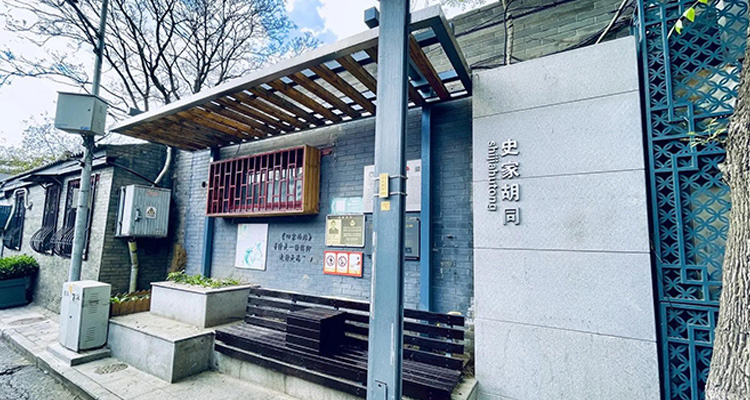Shijia Hutong, Beijing — Where Old China Lives On
1. A Hidden Gem of Beijing’s Old Soul
Tucked away in Dongcheng District, Shijia Hutong is one of Beijing’s oldest alleys — a living timeline stretching back over 700 years. While the nearby Nanluoguxiang draws crowds, this hutong keeps its calm and authentic charm.
Here, gray bricks and old courtyards (siheyuan) tell stories of dynasties and daily life. Locals chat by doorways, the soft ring of a bicycle bell echoes, and the pace of life feels beautifully unhurried.
Known as “One Hutong, Half of China,” Shijia Hutong brings together the essence of Chinese history — from nobles and scholars to artists and ordinary families.

2. Where History and Culture Intertwine
Built during the Yuan Dynasty, Shijia Hutong has witnessed many of Beijing’s key historical moments. During the Qing Dynasty, the Left Wing Imperial School was founded here in 1724 — the roots of today’s Shijia Primary School, now one of China’s top schools.
In 1909, this quiet lane became a key site in China’s study-abroad movement when the government set up the “Office for Students Going to America.” Among those chosen were Hu Shi, Zhao Yuanren, and Zhu Kezhen — names that would shape modern China.
In 1949, General Fu Zuoyi signed the Peaceful Liberation of Beijing Agreement at No. 23 Shijia Hutong, sparing the capital from destruction.
Later, the Beijing People’s Art Theatre was born here, led by the legendary playwright Cao Yu, adding another cultural layer to the hutong’s history.
Even today, old courtyards like No. 51 — once home to Zhang Shizhao and his daughter Zhang Hanzhi — still whisper stories from China’s diplomatic past.

3. Live the Hutong Life: Culture, Food & Local Vibes
Start your walk at the Shijia Hutong Museum (No. 24), a beautifully preserved two-courtyard house once home to writers Chen Xiying and Ling Shuhua — one of the Republic era’s famous “Three Talented Women of Beijing.”
The museum has eight themed rooms, including the Sound Museum, which lets visitors listen to more than 70 recordings of old Beijing street sounds — from hawkers’ calls to tricycle bells.
Nearby, a small creative shop offers hutong-themed stamps and cultural souvenirs, perfect for collectors. During Chinese New Year, the street hosts lively cultural fairs, showcasing local handicrafts and traditional jewelry.
And of course, food is never far away. You’ll find vendors selling candied hawthorns, roasted sweet potatoes, and fried chestnuts — classic tastes of old Beijing. During festivals, pop-up cafés and street snacks make this hutong smell delicious.
Spring and autumn are the best seasons to visit — mild weather, blooming vines, and fewer crowds. For the most peaceful experience, come early on a weekday morning.

Practical Tips for Travelers
📍 Getting There:
Take Beijing Subway Line 5 to Dengshikou Station (Exit C). Walk north to reach the west entrance of Shijia Hutong.
Use Gaode Maps or Baidu Maps for accurate navigation.
💡 Opening Hours:
The museum is free to visit, open 9:00–16:30 (closed Mondays).
Plan about 1.5–2 hours to explore fully.
🧭 Travel Etiquette:
Please respect residents’ privacy — many homes are still lived in.
Avoid loud talking or taking close-up photos of locals. Keep the alley clean and quiet.


